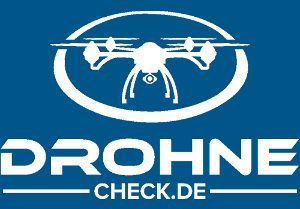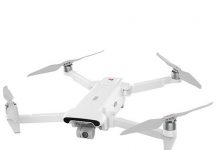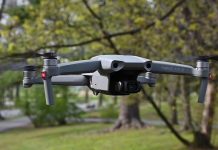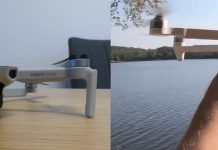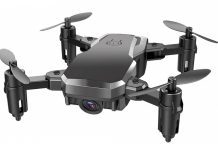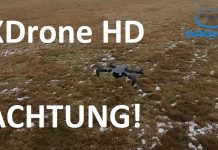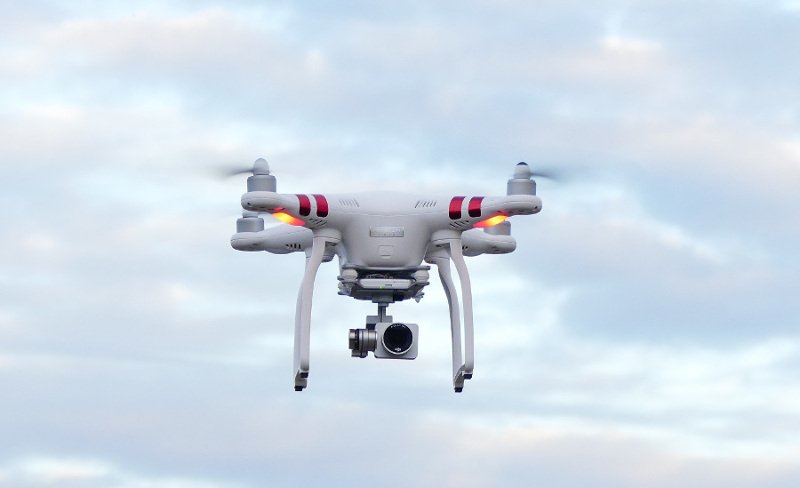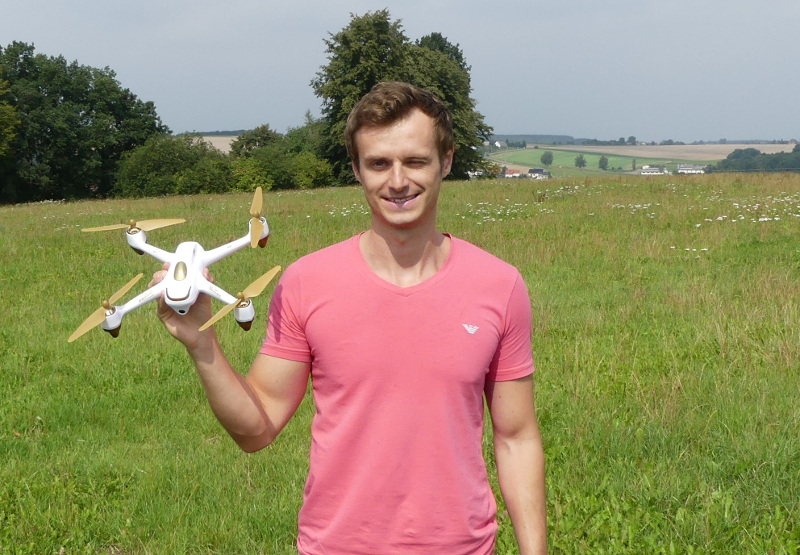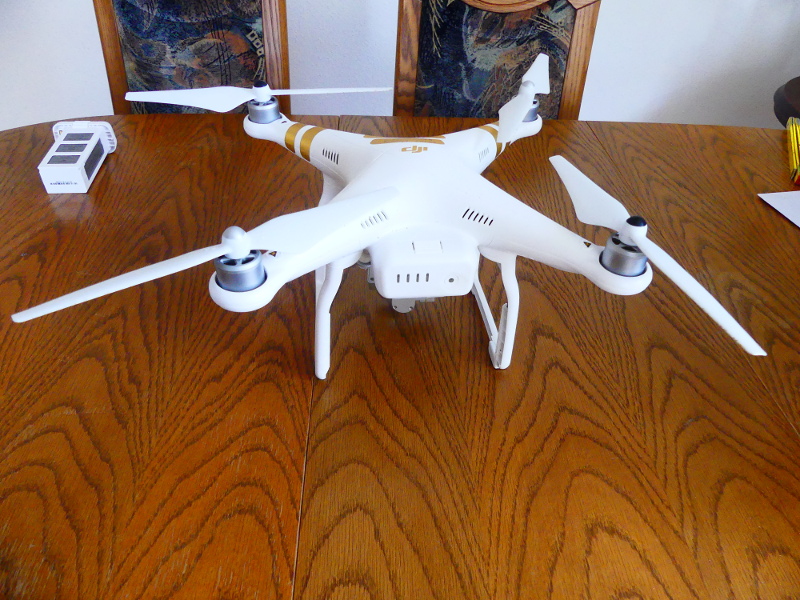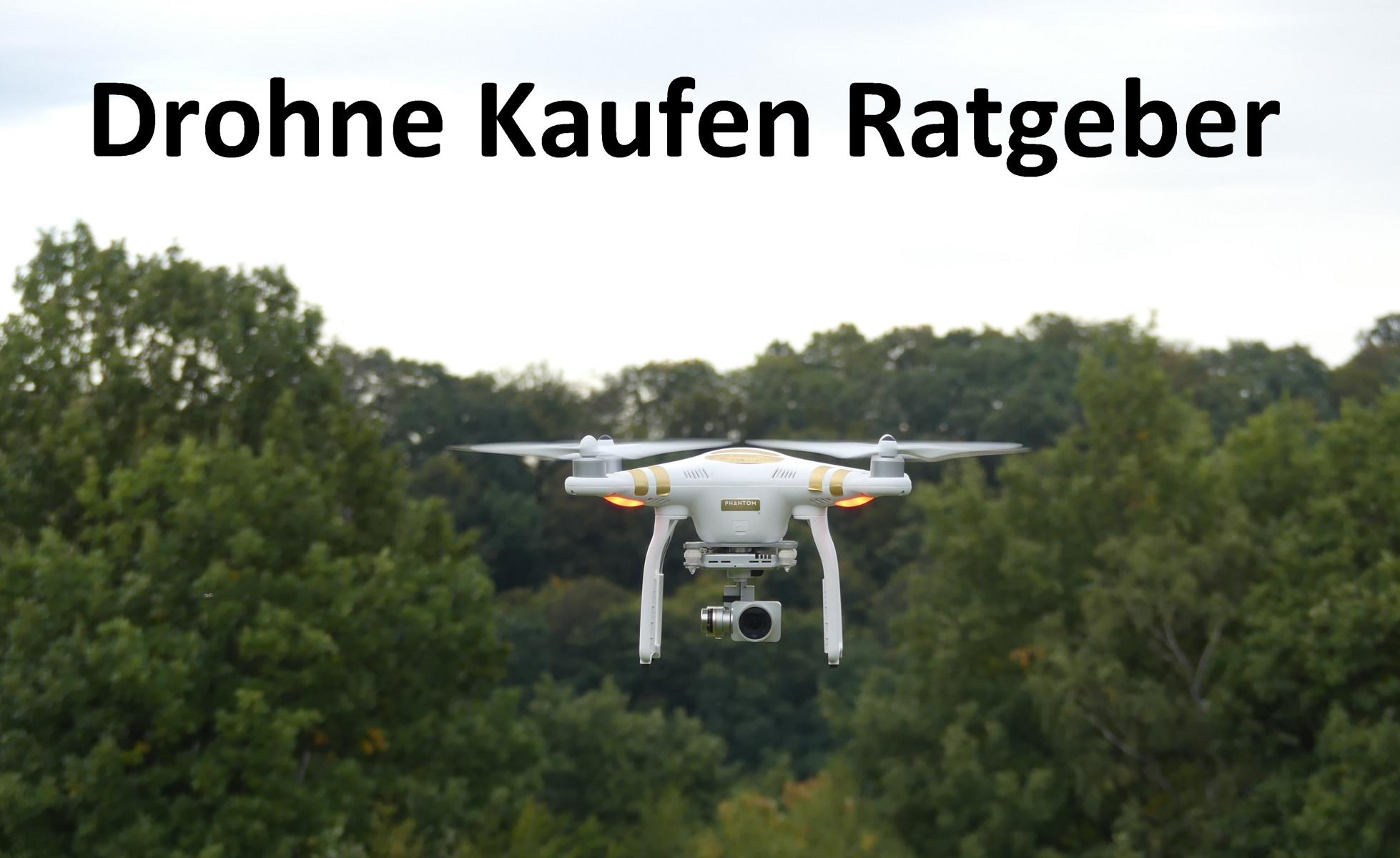
The decision to purchase a drone touches on a whole range of personal demands which should be analysed and examined carefully before buying such an expensive technical device.
With our buying guide, we give you a tool that allows you to take a closer look at which parameters are important for a drone purchase.
The most decisive argument for most prospective buyers is surely the price. However, there are also solutions for this: A lot of technology and accessories even for the small purse. On the other hand, there are also drones that are a little more expensive but unbeatable in terms of quality.
In the following article we will show you what is really important and which models are suitable for you.
Different needs, different drones
It is not always easy for newcomers to keep track of the drone market.
Although there are a few large manufacturers DJI (market leader), Yuneec (2nd place after market share), GoPro or Hubsan that offer really high-quality drones, but there are also a variety of brands that are new to the market and flood the market with cheap goods at discount prices.
At the beginning of your purchase decision is the fork in the road whether you are looking for a beginner drone that can be crashed for little money, or a higher quality drone with camera that produces fantastic aerial shots. The technical equipment as well as the price differ significantly.
Other criteria for your drone selection is the size when collapsed or in flight mode.
Mini drones are small, compact and quite stable for transport and in flight. A big advantage is especially the low price.
Budget: Price of the drone

The price is probably the most important criterion for many buyers of yours. Here it is often difficult to differentiate which drone could meet your requirements. A short differentiation or classification of the drones should help you to find the right model.
The manufacturer DJI offers an outstanding quality, but also costs a little more. The costs for a new battery can be between 100€ and 150€.
Yuneec, on the other hand, often offers a very affordable all-inclusive package that includes an additional battery, remote control and other extras (such as the Yuneec Q500 4k hand gimbal stick). Replacement batteries can be purchased here for between 30€ and 40€.
GoPro delivers with its Karma Drone a quadrocopter which is definitely in the higher price range. Given the compatibility with the GoPro actioncams, an investment here makes the most sense if you already own an actioncam from this manufacturer. The use of the gimbal or selfiestick are great features you would benefit from when buying a GoPro drone.
Another drone manufacturer still rather unknown in Germany is Hubsan. This manufacturer does without a part of the technical equipment (the gimbal system!) and instead offers drones at a reasonable price with numerous functions.
For example, the Hubsan drone has a follow-me mode, return-to-home mode and other great features for a price of just under 250€ (in the highest configuration).
The best drone with a video resolution of 4k and a large scope of delivery is the Yuneec Q500 4k and also our price-performance winner in the field of drones with camera.
If you travel a lot and need a foldable and portable drone and your budget is close to 1000€, we can recommend the Mavic Pro.
Flight characteristics, flight time and range
The best flight behaviour can currently be found at the manufacturer DJI. The drones lie as soft as butter in the air and are even able (depending on weight and model) to withstand gusts of wind.
The smaller drone DJI Spark is a bit wobblier in the air due to its low weight than comparable models that are much larger than the Phantom 3 Standard, which is in the same price range.
The control system works perfectly and implements directly what you give the drone via the remote control.
The newer models from Yuneec also cut a fine figure in the air and offer just as great a flight feeling as the market leader. The Typhoon H Hexakopter is particularly relaxed in the air due to the 6 rotor blades. If one engine fails, the drone does not go down because there are 5 more active.
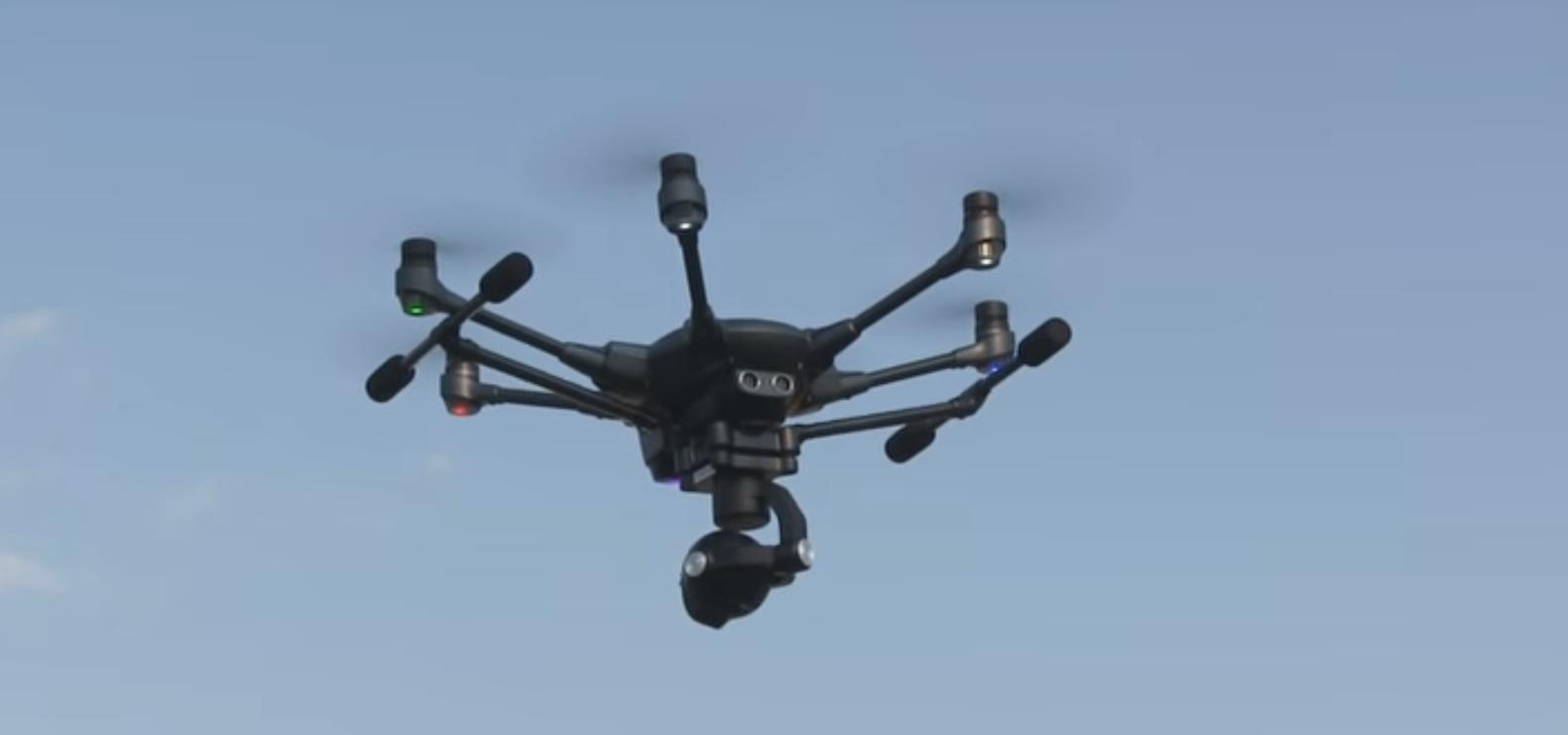
The French manufacturer Parrot offers a variety of different models, but the flight feeling in the area of more advanced drones only convinced us of the Parrt Bepop 2. The Parrot Disco Drone looks great and is a completely new concept, but in our opinion the flight characteristics are not outstanding.
For the flight time we can make a small ranking on which you can orientate yourselves, but this is not to be regarded as fixed because every flight brings different environmental conditions with itself. A long flight time does not automatically speak for a good drone – keep this in mind!
- Parrot Mambo, Parrot Airbourne 7 minutes (beginner drones)
- DJI SPark, GoPro Karma 16 minutes
- Yuneec Breeze 4k 18 minutes
- Hubsan drone 20 minutes
- Yuneec Typhoon H 21 minutes
- Yuneec Q500 4k 22 minutes
- Mavic Pro, Phantom 3 Professional 23 minutes
- Parrot Bepop 2 24 minutes
- Phantom 3 Standard, Xiaomi Mi drone 25 minutes (also beginner model but with good technical equipment)
- Phantom 4 Advanced 27 minutes
- Parrot Diso 35 minutes
The range is less important for professional drones, because they can fly far beyond 500m without losing radio contact. Within Germany you are not allowed to fly out of your sight because of the current drone laws. Therefore, the consideration of the distance how far the video transmission signal reaches without major problems is especially relevant for the cheaper drones.
Range ordered by drone model:
- Parrot Mambo, Parrot Airborne 20m with mobile phone, 60m with flypad
- DJI Spark 180, maximum 200m
- Hubsan drone 200m
- Phantom 3 Standard 300m
- Yuneec Q500 4k 350m
- GoPro Karma 400m
- Mavic Pro, P3 Professionel, Phantom 4, Typhoon H, Xiaomi Mi, Parrot Bepop 2 >500m
The drone camera
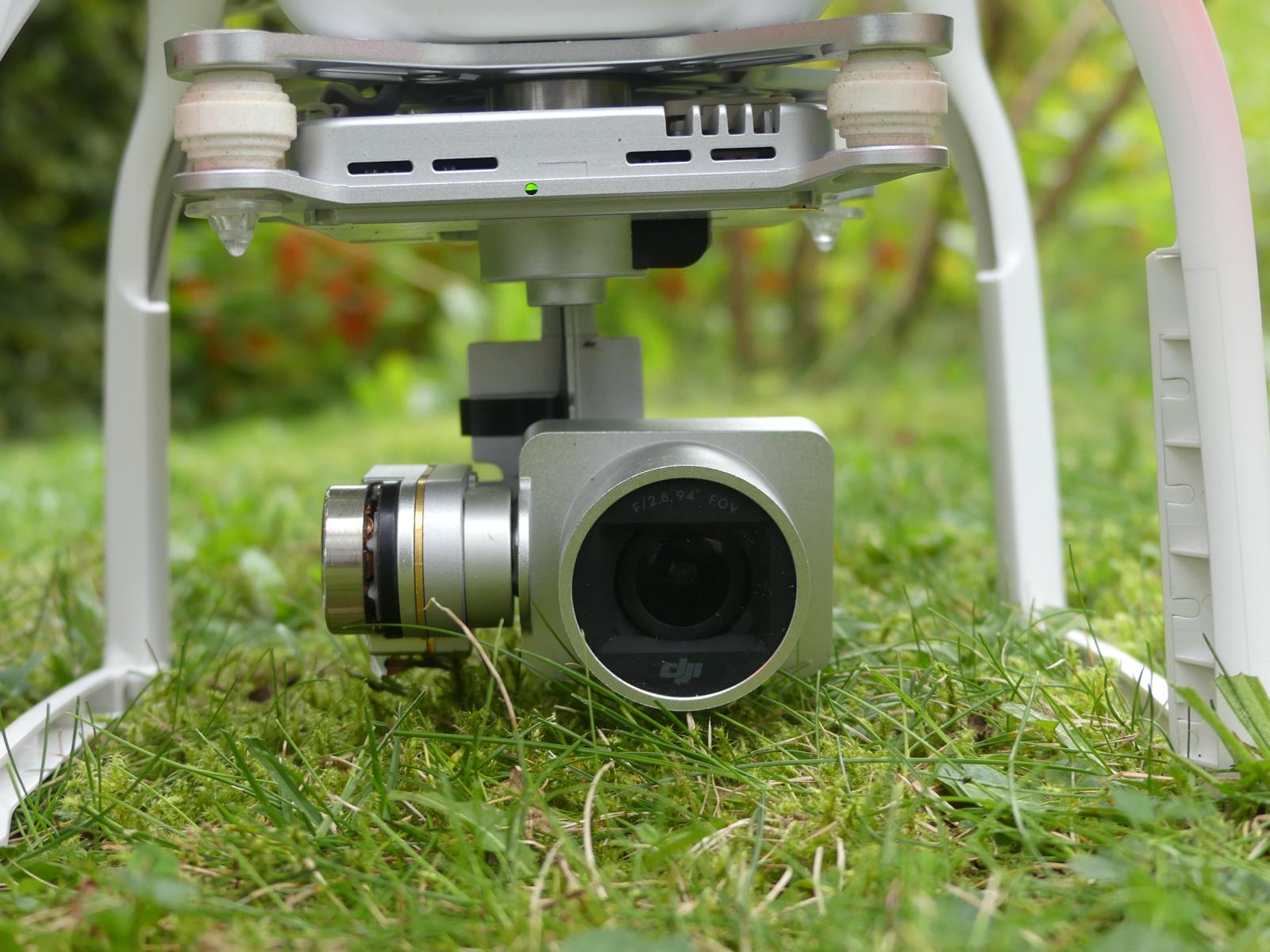
If you have decided to buy a drone with a camera, there are considerable differences in quality, functionality and gimbal systems used.
The resolution of the camera is crucial for both video and photo production.
The following formats are available:
- Full-HD: Video resolution with 1920x 1080 pixels at 16:9 display. You know this already good picture from your TV at home. Most channels are broadcast in Full-HD and already deliver a great picture.
- 2.7k resolution: Video resolution with 2704 x 1520 pixels at 16:9 display. The level of detail in this picture is already better than from movies you know from a DVD.
- 4k resolution (also called Ultra-HD): Video resolution with 3840 x 2160 pixels at 16:9 display. This format delivers the best video quality currently available on the market.
The frame rate at which the video is recorded is also important for this distinction. Depending on how many frames per second are possible, your video material will look smooth or less smooth. Our human eye records the environment with a frame rate of 24 frames per second.
The following distinction can be made:
- 30 frames per second: This frame rate is the industry standard for drone cameras and provides good, fluid images.
- 60 frames per second: Depending on the video resolution, this parameter can drive up the price of the drone considerably. 60 frames per second looks really brilliant and the image looks more dynamic and lively.
- 120 frames per second: Newer drone cameras offer this setting to create slow-motion shots.
The standard setting of a good entry-level drone with camera is Full-HD and a frame rate of 30 frames per second. The DJI Spark meets exactly this requirement. If you look at the aerial shots of this affordable drone, most of you will already be satisfied with it.
The entry level drone DJI Phantom 3 Standard is capable of 2.7k recordings at a frame rate of 30 FPS. The recordings are good, but not much different from a Full-HD movie. This is due to the built-in action cam which is attached to the P3 standard. This is good mediocrity, but still offers some room for improvement.
The video recordings of the DJI Mavic Pro in 2.7k look really cinema-ready and will definitely amaze your fellow men. The depth of field is really brilliant and very detailed. The Mavic can deliver a frame rate of 30 FPS.
The DJI Phantom 4 Advanced has one of the best actioncams available for drones. It is possible to record in 4k (Ultra-HD) with 60 frames per second. The video material not only looks incredibly sharp and detailed, but is also very fluid due to the 60 FPS. Especially fast changes of direction or moving objects can be captured very well.
120 FPS can usually only be produced in Full-HD format. The picture looks extremely fluid and the reality or recorded environment sometimes looks like in a first-person shooter or computer game.
A special highlight in the world of drones is the 360° rotatable camera which is attached to the Typhoon H. It can be moved in all directions and thus offers a panoramic view which is currently a unique selling point.
Gimbal system
Within the drone family there are essentially 3 different gimbal systems
- Mechanical gimbal
- Software gimbal system
- Built-in camera without gimbal and without software for image stabilization
A mechanical gimbal system is built into all DJI drones and some Yuneec drones.
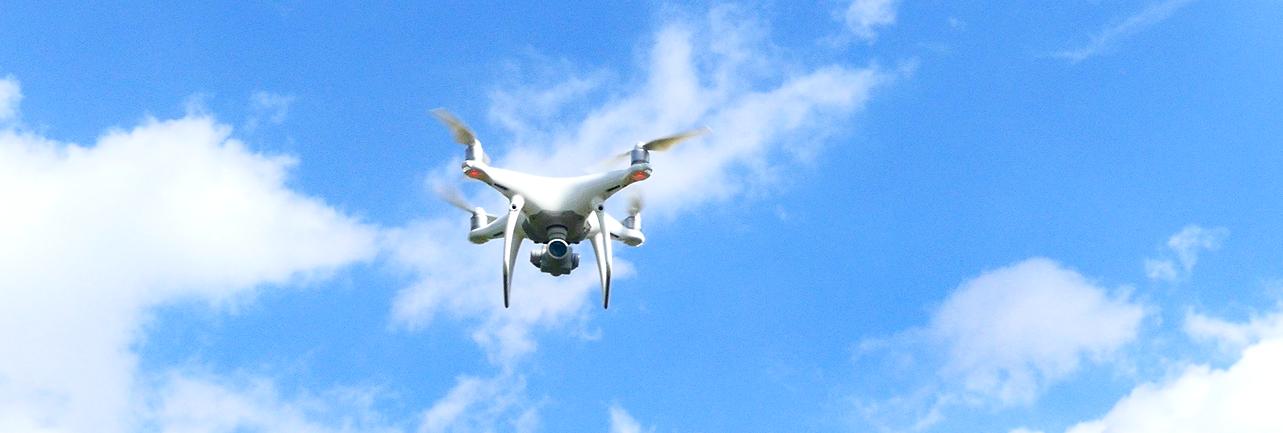
This system ensures that the camera is kept straight during the entire flight. If the Actioncam could move freely around, the aerial shots would only be half as good because the picture would be a bit shaky and blurry.
In our experience this kind of image stabilization provides the best video recordings. No matter if the quadrocopter moves forward, backward or sideways, the picture always remains jerk-free. The following copters tested by us have a mechanical gimbal system:
- Mavic Pro
- DJI Spark
- Phantom 3 Standard
- Phantom 3 Professional
- Phantom 4 Advanced
- Yuneec Q500 4k
- Yuneec Typhon H
- GoPro Kamra UAV
- 4k Mi drone
The software gimbal system calculates all important image data with an installed highly complex software of the drone, in order to subsequently deliver a wobble-free image as output to the connected terminal (mobile phone, tablet or remote control).
Depending on how sophisticated the software is, great video recordings can also be produced. Nevertheless, it should be pointed out at this point that sometimes the software does not « follow » fast changes of direction or moving objects and a black border or overlapping of the video sequence can occur.
However, due to the advanced development of all drones, this is very rarely the case.
Nevertheless, this type of drones offers one advantage: Since there is no freely suspended gimbal that has to be kept stable, such drones are also less susceptible to major damage in a crash. Furthermore, the price of these drones is often somewhat lower.
We found it really unbelievable how often and what kind of crashes the Parrot Bepop 2, for example, has withstood. Of course it depends on the material quality and the brand.
These drones have a software gimbal system:
We have also tested Quadrokpoters that have a camera but no gimbal system or software.
The only stabilization of the image comes from the flight of the drone itself. So if it is very windy and the drone flies very unsteady, the picture is blurred.
The advantage of this drone is the often low price. If you are a beginner and just want to try out a drone with camera, then you are at the right address.
But if you are planning to produce high quality video recordings, then these drones are out of question for you.
These drones have neither gimbal system nor gimbal software:
UAV accessories and extensions
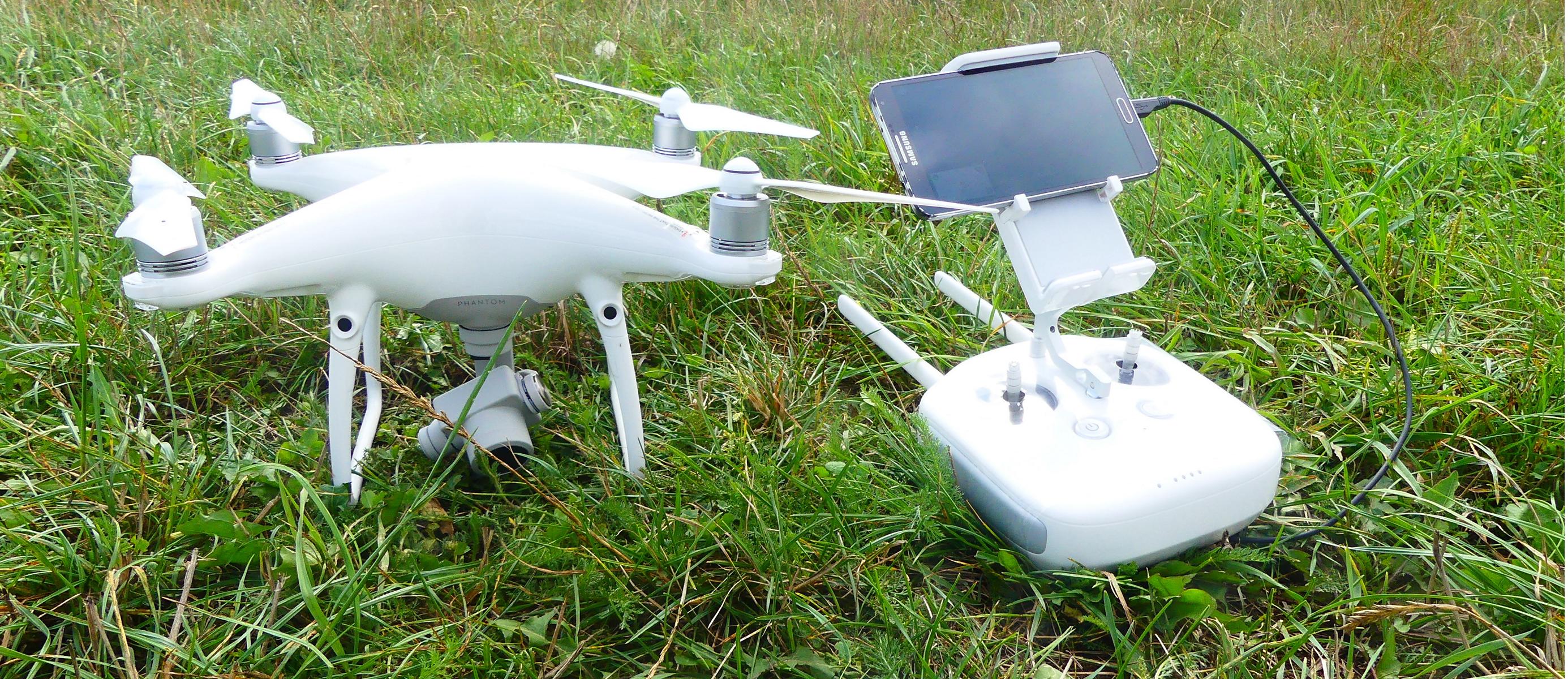
For particularly demanding drone pilots, the question of a possible expansion of the drone is sometimes more important than the knockout criterion of price.
The following possible extensions are currently available for drones:
- Mobile landing frame on which the drone can take off and land (very useful on uneven ground)
- Additional battery and propeller (very important, especially for professional pilots who have to fly longer to produce great film footage!)
- Drone sticker –> The name and address as well as contact details must be on a fireproof sticker attached to the drone since 01.10.2017.
- Controller extensions like a holder for the tablet on the Mavic Pro remote control or a signal amplifier for a higher range of video transmission
- Carrying / Transport bag
- Possibility of dismounting the camera and/or attaching another camera intended for the drone. With some Yuneec models, the camera can be easily removed and used on a handheld gibal. This saves additional costs and is also very practical.
- Both DJI and GoPro offer drones that have a universal camera mount that can be used with various action cams, not just the one specifically designed for the model.
- FPV connection or the possibility to control the drone with the help of virtual glasses
The drone flying with the use of FPV goggles is truly the entry into another dimension, since you no longer control the drone through the display on your terminal, but you are directly in the cockpit and are the captain of your unmanned flying object.
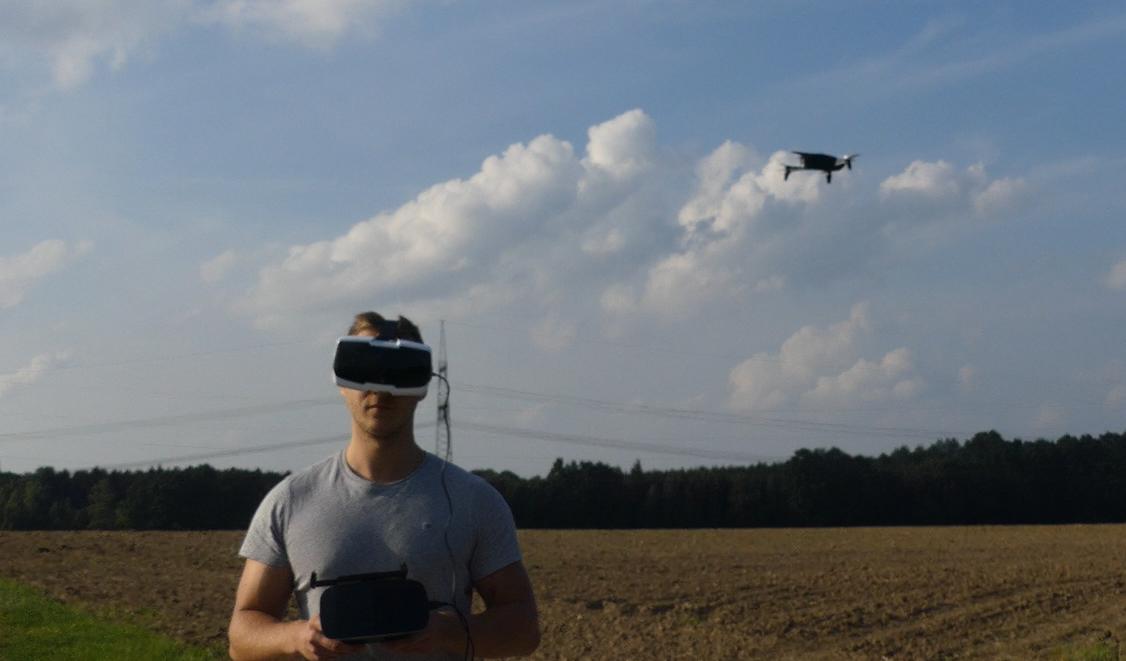
Please note that you must never fly alone when using such glasses, as you will not be able to see the surroundings. You can find more information in our article about the drone regulation.
The image transmission usually works on a resolution level of 720p or 1080p, i.e. Full-HD.
In the field of FPV drones there are big qualitative differences so that a particularly well-founded research is necessary.
The following drones tested by us offer the possibility of an FPV flight:
- Parrt Bepop 2
- Hubsan drone
- DJI Mavic Pro
- DJI Phantom 4
- DJI Spark
- All Phantom 3 models, however, a small upgrade is necessary which is not worthwhile according to a cost/benefit calculation, so it is recommended to have a look at a newer model from DJI. (e.g. Mavic, P4 or the Spark)
- Typhoon H
- Xiaomi Mi Drone
- Typhoon Q500 4k (this also requires a comprehensive hardware update)
The Parrot Bepop 2 provides a very good stable transmission signal when using FPV glasses. The software gimbal system also ensures a smooth image.
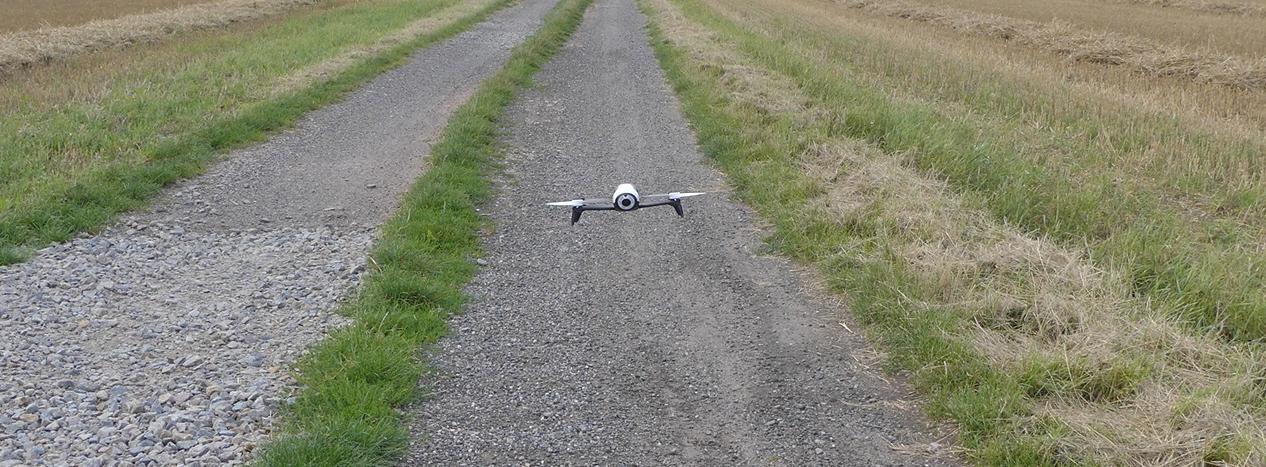
If you use FPV glasses for drones that do not have a stabilized image by a gimbal system or software, you can probably imagine the result: You’re flying in a very shaky aircraft that is rather difficult to fly because of the turbulence.
FPV goggles make sense for a drone, from our point of view, only if the image is stabilized during the whole flight.
Conclusion to the drone purchase
As you have seen from our explanations, there are an unbelievable number of purchase criteria that must be considered when buying a drone. Often it is not possible to make a purchase decision directly after the first research with which you are happy in the long run.
Therefore it is very advisable to study all of our drone test reports very carefully, because it is the small details that matter most, which can later make your flying easier/sweeter.
In order to give you a short overview of which models we personally find the best and which needs the drones fulfill, the short summary should serve as a guide.
For all drone pilots who have a bigger budget and want an all-in-one drone that is not only small and handy, but also offers 4k pictures, a zoom function and a great flight experience, DJI Mavic Pro is the right choice. In this model DJI combines the advantages of all Phantom 3 and Phantom 4 models at a great price!
With the Spark, DJI has launched a model that is affordable for just under €600 and comes with a gesture control. This innovative feature is especially interesting for pilots who want to have a free hand during filming and want to use cool video functions. Especially for beginners who don’t know exactly how to shoot the camera for a great shot, it’s worth a closer look.
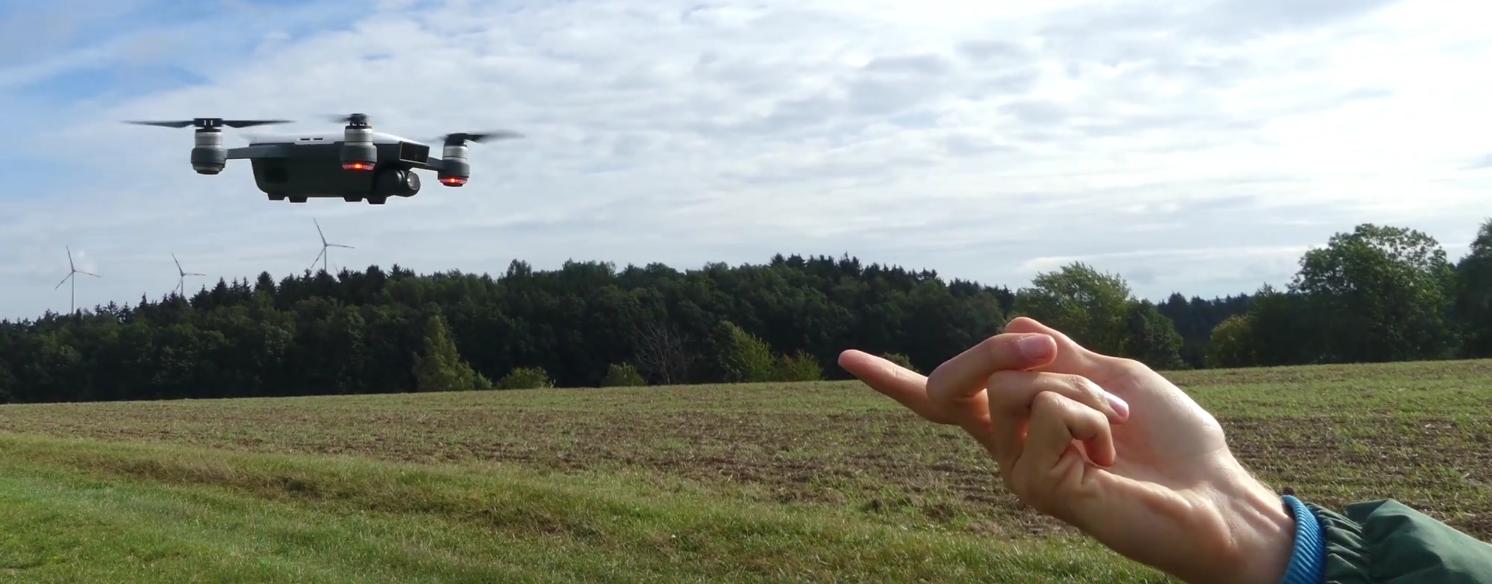
If you have very high demands on technology, flight characteristics, battery life, safety and sensors, and price is not a primary consideration for you, then the Phantom 4 Advanced is definitely the right model for you. The camera has a resolution of 4k and 60 FPS, making it an industry leader. It also has a flight time of 27 minutes and all the safety features you would expect (e.g. obstacle detection to the front and below). Intelligent flight modes with which you can produce cinema-quality images round off this high-end drone.
The Typhoon Q500 4K is the price/performance winner for already demanding pilots. It not only comes with a very good 4k camera, but also with a generous scope of delivery, which includes a hand gimbal, second battery, a large transport case and a remote control with integrated display. The price is currently at just underp 700€ and is therefore unbeatable for the quality and scope of the drone package!
The Hubsan drone brings for a price of 250€ a lot of technical features that you won’t find anywhere else on the market for this price. A follow-me mode, return-to-home mode as well as a good flight time have convinced us with this entry level drone. The only drawback is that there is no image stabilization. Nevertheless we can warmly recommend this model for beginner pilots.
If you want to fly a drone with FPV glasses at an unbeatable price, then you should take a closer look at the Parrot Bepop 2. Not only the FPV goggles are fun, but also the certainty that this drone will survive one or the other fall without major damage due to the synthetic fibre carbon.
If you don’t have any flying experience and don’t need a drone with a great camera, you can test either the Parrot Mambo or the Parrot Airborne. These are already available for less than 100€ and will survive the odd crash. If you want to fly indoor, these are the right models for you!
We hope that we could bring you a little light into the dark and you now know a bit more about what is important when buying a drone / quadrocopter.
If we have not covered a topic in your opinion, write it to us in the comments and we will expand our report for you.
| Spaßfaktor | |
| Flugverhalten | |
| Materialqualität | |
| Aufnahmequalität | |
| Preis-Leistung | |
| Moyenne 0/5 |



